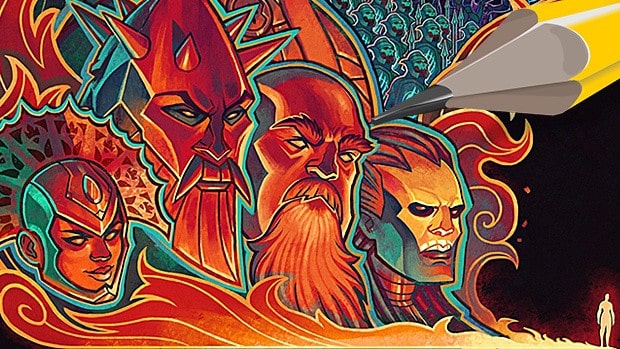Tyranny is a role-playing game developed by Obsidian Entertainment, the same studio behind another game not so dissimilar. Pillars of Eternity has set Obsidian on the path of developing old school-esque cRPGs based upon dungeons and dragons. On the surface, Tyranny may seem just like Pillars of Eternity, but it is substantially different when you begin to dig deeper.
Introduction and Presentation
From the get go, Tyranny distinguishes itself from the pack of isometric RPGs by focusing on a unique narrative that is left generally untouched by its competition.
The game puts you in the shoes of someone who was forced to become a person of great authority and power. Inherently, you’re the villain and the game thus forces the player to actually role-play the idea that no matter what you do, you can’t be everyone’s hero.
The game starts you off with character customization that you would expect of Obsidian Entertainment; you are able to choose your class, gender, skin color, skills, background etc. What this game does differently, however, is the prologue that comes right after.
This prologue is known as the “Conquest,” and is based upon an invasion you are a part of, being led by an all-mighty and mysterious Overlord who is seemingly a living god. Of course, the invasion turns out to be a success, the bad guys won, but the purpose of this Conquest mode is more about determining how your character acted and what sort of political agenda he or she leaned towards.
It’s a choose-your-own-adventure type introduction to the game set on a map with a lot of reading and with the purpose of boosting replay value as well as enhancing the setting you are delving into before you even get into it.
Though every choice has an impact on the world, I felt many of the choices were rather insignificant in comparison. There was also an underlying gimmick behind the whole thing; generally almost all the choices that you make simply end up aligning your character towards a certain path that the developers have set out for a player to embark on.
The game definitely tells the player that it is meant to be played several times through to be truly experienced. There are four “distinct” story driven paths that a player can take and some areas that cannot all be unlocked in a single playthrough.
Keep in mind that I use the term distinct loosely because some would argue that the major plot points are hardly ever changed. It is also important to be aware that Tyranny is a game that is far more linear than Pillars of Eternity, a game that most players interested in Tyranny would probably have already played.
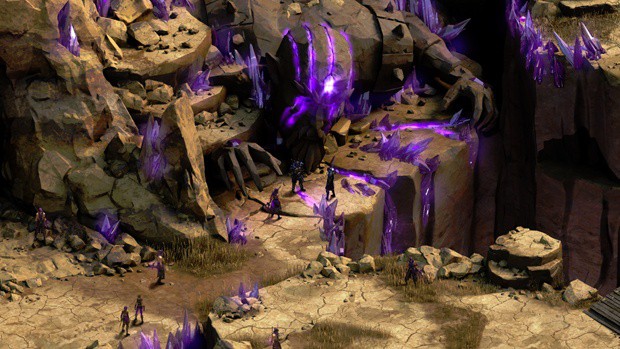
Aesthetics and Visual Fidelity
Tyranny has some excellent and creative ideas when it comes to the various landscapes within the game. Each region has distinct features, with its own charms, horrors and madness. Villages and towns are remnants of ancient civilizations and lands torn by perpetual storms.
However, since the game is far more linear than Pillars of Eternity, do not expect much exploring in these parts. Though the idea, theme, written descriptions and even the loading screen art of an area may impress, within the game it just doesn’t seem as epic as it probably would in your head. That is probably why a lot of people prefer the books to some of the adaptations they see in the form of movies.
I also have to point out that I personally felt that Pillars of Eternity offered more charm in terms of eye-candy, though Tyranny offered better particle effects and animations. Indeed, the spells and the magic system in Tyranny is something that I feel completely outclasses Pillars of Eternity.
To sum my opinion on the aesthetics, I would say that Tyranny seems like it lacks polish. The game had a smaller budget than Pillars of Eternity did and it certainly shows. There is stellar sound design and the music is as good as Pillars of Eternity’s, albeit not as vast, but the models and designs showcased are unimpressive.
I get that the game was going for a gritty and grim look. I personally adore dark souls and I wouldn’t want anything less than a super messed up world, but Tyranny’s world feels like it was held back.
This all applies not only to how the factions and characters were designed, but to how weapons and armor look too. There are two palettes to how weapons and armor look, either they’re made of bronze or iron, but regardless they’ll still look pretty crap especially when you start mixing armor together. They don’t need insanely high texture quality to look good. I was perfectly happy with how they looked in Pillars of Eternity, which followed a more traditional medieval fantasy look.
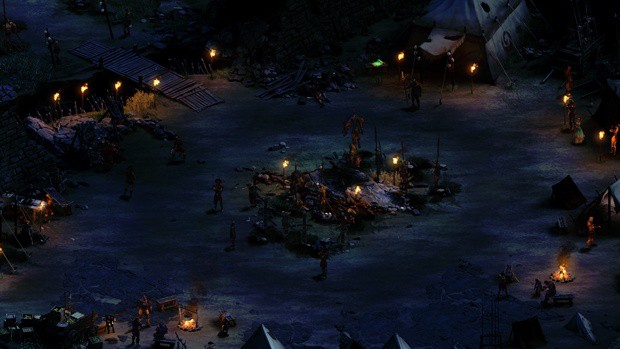
Mechanics and Visceral Enjoyment
Now this is where things start to get heavily subjective. I understand a lot of players play these types of RPGs to experience a story driven experience and would prefer that combat be minimized in comparison.
Though others would say there is too much combat in Tyranny, I feel like there is too little. Also, later down the line, a lot of encounters are simply too petty in comparison to your character. It just seems like I got too powerful too quickly and I have been playing on Hard from the start. Unfortunately you can only set your game to a setting above hard, path of the damned, when you make a new game.
I just want to face enemies that can take more than one hit when my character becomes this over-buffed agent of death who, by the way, looks like he tried to audition for the role of Julius Caesar, but ended up having to play as Conan the Barbarian.
Tyranny features a real time, with pause style, combat with more of a focus on cooldown based abilities rather than party management and tactical positioning, which was what Pillars of Eternity proudly relished.
The addition of so much more animation to combat as well as creative abilities allowed me to enjoy Tyranny’s combat more so than any of its peers. Though there may not be as much build variety in Tyranny, it allows you to specialize your character and your unique party members to tailor towards the playstyle that you desire.
I personally made a sword and board tank that relied on basic attacks while I had another tank or crowd controller keep my weaker characters safe from the ones who just didn’t find the space or desire to fight my main character.
Honestly, the game pushed me towards that direction with its talent tree. There were so many talents that just made my character’s basic attacks stronger, for example allowing him to attack up to three times with each basic attack, which made me start to cater towards the idea that I want to focus on just simply attacking with my main character.
That may sound boring, but honestly it was definitely not due to the things that you actually may end up accomplishing through synergizing abilities, stats and spells. To truly understand what I am trying to convey, you must first be introduced to the game’s spell system and combo abilities, which are definitely interesting and worthy of your attention.
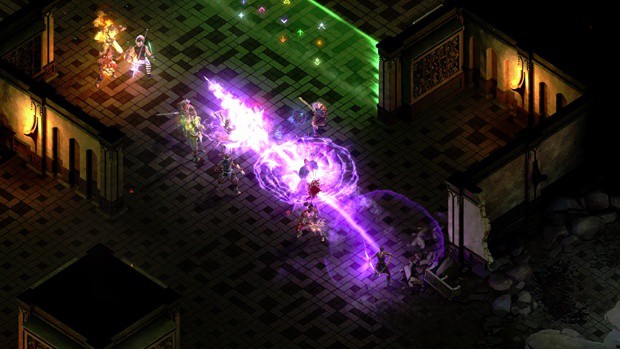
Tyranny innovates in its magic system by turning into a crafting one, incorporating runes that apply dozens of effects to a particular element, allowing them to be shaped according to your desires. For example, you can use the element of fire to not only conjure it into a fireball, but you can turn it into perhaps a meteor storm or a beam or even an enchantment for your weapon.
Not only is there a myriad of different spells you can create, but there are also dozens of interesting enhancements you can add on to your spells, provided you have enough of the skill, lore, to do so. It is for this reason that I definitely recommend always having a decent investment into lore, even if you are a fighter; not only is it very useful in dialogue, but it is also a vital skill in exploring one of the most interesting systems in the game.
It was clear that a lot of effort went into all of the different types of moves you can do in combat, whether it be magic or an ability unlocked through the talent tree, every technique is just fun to use. Inevitably, as a result of the large number of abilities in the game, some may just not be as useful as others rendering them useless, even if they may be cool.
Thankfully, a lot of abilities are situational and generally quite useful. Keeping them in mind is paramount in overcoming certain predicaments should they befall your party.
There are not only a bunch of abilities that you may unlock through leveling, but you can unlock even more by inspiring loyalty or fear in certain factions and companions. When it comes to companions, you can unlock combo abilities where two party members can collaborate to unleash a devastating attack.
The most powerful abilities are limited to a number of uses before you rest in game whereas the rest of the abilities are simply limited by cooldown. Now that you have a greater understanding of magic and abilities, I will explain why something as mundane as basic attacking was one of my favorite go to methods of pacifying those who threatened my authority. Not only was it effective due to how my character was tailored, but it was very satisfying to watch.
There was a particular combo ability that I was very fond of since it imbued my character’s weapon with the power of the storm. Through that ability, which I ensure is as epic as it sounds, and others that would, for example, raise my attack speed or spark an explosion on hit, you can imagine the sort of havoc that is potentially unleashed when you’re attacking up to three times per action. The weighty impacts of each blow and the fantastic cries of the elements you’ve sown makes the flight of limbs all the more satisfying to behold; Tyranny gives power a whole new meaning.
Now all this sounds awesome, but it’s all bogged down due to some gripes I have. I already mentioned how I felt there was too little combat and there were few enemies that could demand the most out of your group, but the biggest issue is the enemy variation. There is definitely an objective lack of enemies that you can fight; Tyranny is completely outmatched by Pillars of Eternity in this regard. If this is what it means to deviate from the high fantasy genre then I am certainly unhappy with this new direction. I am simply going to notch it down to the budget cuts and time constraints since Tyranny definitely does give off the impression that it is an unfinished vision.
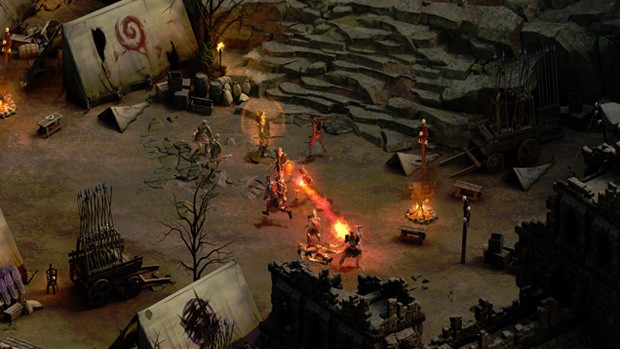
Tyranny is a solid game that suffers from a lack of polish. There is so much that I wish the game developed on and I sincerely hope to see more of the world. The story itself might be interesting, but it feels like it ends too abruptly; things were just getting really interesting. Nevertheless, the tale was an experience that left a good taste and I hope it will be continued upon, though the details better have more time spent on them.
There are also certain traits of Tyranny that I feel uncomfortable with. The most considerable of issues would be the fact that Tyranny focuses on replay value rather than providing freedom and quality content. I assume it was a design choice to entice more hours into the game, but in the end I was never enticed to start multiple playthroughs of Tyranny and I put far more hours into Pillars of Eternity, its spiritual predecessor.
Tyranny is unique and fresh on the surface, easily charming the player to dig deeper into its core, but only to be disappointed, not by what is, but what could have been.
Tyranny was reviewed using a Steam key provided by Obsidian Entertainment.
